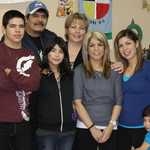

Weaving Stories and TraditionsStorytelling and weaving are treasured aspects of indigenous peoples. Much time is put into both the weaving of the basket and the weaving of a story.
November 24th, 2013, 2pm
It was 2°C with few clouds. The breeze was light.
In Joann Archibald’s paper ‘Coyote Learns to Make a Story-basket.’ She use the modifier of story-basket to describes the steps that she takes to create her own stories. She speaks of the interviews and talks she had with many elders on the West Coast of British Columbia. From my reading I learned of her experience of taking the thin strips of ash and weaving them to create her own basket. What she learned from the elders was that each strip was a part of her experiences in life. Each person will as a result will create baskets that are of an individual’s thoughts and dreams. In her she cleverly brings coyote along with her on her path, and as a result coyote is part of her story basket.
Archibald explains that you need to give your first basket away for it to be useful. That the baskets and the stories will continue to get better if you keep returning to the Elders to have them check your story basket, she says “to see if I am doing it in the ‘right’ way.’”(Archibald, 215) The paper details the ways that teacher could use stories in their classrooms.
In California, native groups there have created a weaving circle. The group made up of individuals from five different native bands in the area meet to make baskets in the Pomo Indian-style. Lorene Sisquoc states that “All your good thoughts are put into the work. It helps you connect with your environment and your inner peace. It helps to balance you and your thoughts while thinking about your heritage. Weaving connects to everything-the culture, the language, the environment.” (Diggs) The legends/stories and weaving were considered gift to the people. “During the weaving process, the beginning stories are handed down, “because ours is an oral tradition.” Said Sisquoc.
In the article Enduring Traditions of Life and Commerce found in Grantmakers in the Arts Richard West tells a story of Mrs. Matt a basket-maker who was asked to teach a class at a local university. Just into the first month the students started to complain that all they had done was sing songs, and wanted to know when they were going to start making baskets. Their teacher Mrs. Matt was surprised she was teaching them to make baskets. The songs she was teaching are the ones that are needed to be sung while the basket materials are being soften in ones mouth. The students still complained and Mrs. Matt explained to them that a basket is a song made visible. As mentioned many of the materials that are used are traditionally chewed or softened in ones mouth, the Cheyenne people are becoming concerned with the pesticide, chemicals and herbicides that are used to control undesirable plants in their environment. Many of the grassed and plants that they use for basket making are being poisoned and quality of the plants is being affected. Not to mention that it is making the weavers and the gathers sick. (West)
The basket is a container for holding and storing things, for sharing things, and for giving things away in, weather it is grain, a song or a story baskets and weaving are very important in indigenous cultures.
Filed Under
Other moments in The Pas
-
prairie first nations, indigenous, Brandon Story Class
The Seven Teachings are part of the First Nations Peoples lives, living on the Prairies here in Canada
in The Pas, Canada -
prairie first nations, indigenous, Brandon Story Class
Suicide on reserves
in The Pas, Canada -
Brandon Story Class, indigenous, prairie first nations
Alcoholism on reserves
in The Pas, Canada -
prairie first nations, Brandon Story Class
Pike Lake Culture Daylocal artist: Solomon Colomb 2002
in The Pas, Canada -
prairie first nations, Brandon Story Class
A look back to The Oka Crisis, 13 years ago.Part of my Winter Count
in The Pas, Canada -
Brandon Story Class
Pearl exclaims;"Can I help you with your homework"
in The Pas, Canada -
prairie first nations, Brandon Story Class
The ulu knife, traditionally the handle is made from caribou antler or walrus ivory. The blade was made of slate, until metal was introduced during the Fur Trade.
in The Pas, Canada -
prairie first nations, Brandon Story Class
Art from Baffin Island.
in The Pas, Canada -
prairie first nations, indigenous, Brandon Story Class
White Feather
in The Pas, Canada




